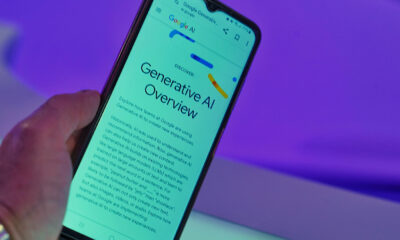SEO
Blog Post Checklist: Check All Prior to Hitting “Publish”
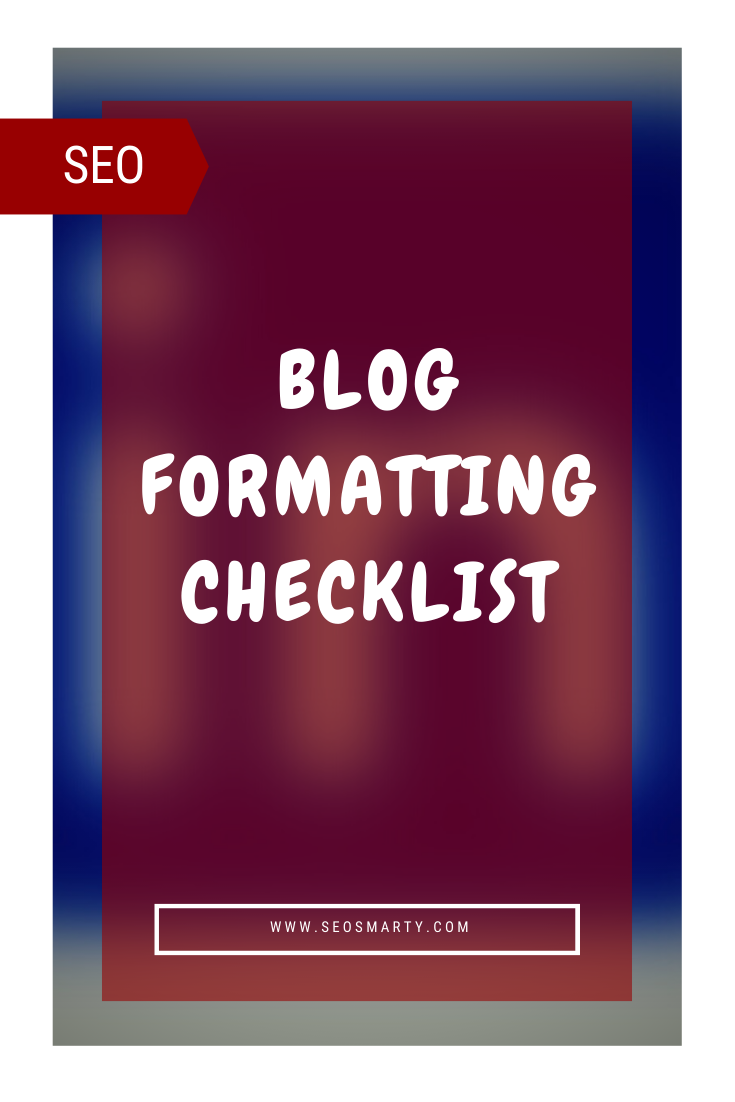
One thing I have clearly realized while being a full-time blogger and editor is that most writers (no matter how much we love them) are terrible at formatting.
I mean, I get it.
Writing is a creative process, and things like formatting, interlinking and proofreading may keep you from letting your creativity flourish.
One workaround is hiring a VA but if you have control issues (like I do) and still want to do everything on your own, here’s a free blog checklist that’s easy to follow and help you publish a perfectly formatted article each time!
A good formatting checklist should be:
- As short as possible (The longer it is, the more chances there are that none of your contributors will follow all the steps);
- As concise as possible (Avoid explaining the reason why you want it to be formatted that way. The more you explain, the less obvious your point becomes. Just list your requirements)
- As easy to understand as possible (Add a few screenshots, bold most important points, etc).
Feel free to make yourself a copy of this checklist, edit minor details (like the preferred width of images) and use it to edit your blog. It will be suitable and (hopefully) useful for.
- A single-author blog for consistency
- A (business) blog with multiple co-authors;
- A business managing multiple paid contributors;
- A business owner outsourcing content to ghost writers, etc.
Attention: This guide requires that your blog contributor has a wp-admin (Contributor) access to your blog. Otherwise, you may ask to send you the articles in HTML.
*Make a free copy of the checklist here. Read some explanations below*

Structuring Standards
We know that breaking the article into sections is very important: blog readers tend to scan through the articles jumping from a subheading to a subheading (and probably reading the sections that seem most relevant to them).
One of the most efficient ways to capture your readers’ attention is to provide catchy subheadings that would summarize your article content nicely. Ideally, the reader of the article should understand what it is about by just scanning through the subheadings which should effectively summarize the article content while still encouraging the reader to go more indepth.

Other important guidelines that (may) go in this section:
- Make your sentences and paragraphs short (that makes the whole article easier to read)
- Introduce your article effectively in the opening paragraphs and encourage a discussion in the conclusion (by asking some questions)
Adding Links
Links are always great (unless links are brutally self-serving and anchor-text-dirty). I always encourage all my authors include links to any app, business or person they are mentioning. Links are user-friendly, so in my guidelines I always prompt contributors to:
- Link to relevant articles on my blog;
- Link to others relevant articles elsewhere (as well as sources of information, apps, etc)
- Normally link words (not image files or subheadings)
- Always make sure they are using the full URL and the original “clean” link (now a shortened version, stripping all tracking parameters, etc).
Lists
Including lists is also highly appreciated. A well-formatted list is likely to draw readers’ attention and make them stay.
Sadly, contributors tend to format lists in all possible ways using -, *, or any other inappropriate symbols instead proper <ul><li> coding. Therefore it’s a good idea to remind them of proper formatting here.
Images
Another very important element of any blog post. Images will never be added unless you clearly ask for them.
Here I specify the proper style and size of the images as well as encourage authors to include a relevant, catchy and properly attributed Creative Commons image.
Here are more checklists you may find useful for blogging:
FAQ: Blog Post Checklist: Check All Prior to Hitting “Publish”
What is the purpose of the blog post checklist?
The blog post checklist is designed to help bloggers and editors publish well-formatted articles consistently, without having to compromise on the creativity of the writing process.
Who can benefit from using this checklist?
The checklist can be beneficial for a range of people including single-author blogs, multi-author business blogs, business owners outsourcing content to ghost writers, and businesses managing multiple paid contributors.
What are the key components of the checklist?
The blog post checklist focuses on:
- Structuring standards (including catchy subheadings and succinct paragraphs)
- Proper linking to relevant articles and sources
- Creating well-formatted lists
- Adding appropriately styled and attributed images.
How should the article checklist be crafted?
The checklist should be as short, concise, and easy to understand as possible, with important points highlighted, possibly with the use of screenshots.
How can readers access the checklist?
Make a free copy of the checklist from the link and modify it according to their preferences and needs.
If you find the guidelines useful or have any improvements to suggest, please comment below!
I am Ann Smarty, owner of SEOsmarty.com. I’ve been in the SEO industry for two decades. I am the former Editor-in-Chief of Search Engine Journal and a contributor to Mashable. These days I am running Viral Content Bee and writing for Moz, Buzzsumo, Wix and many others!
SEO
Google’s AI Overviews Shake Up Ecommerce Search Visibility
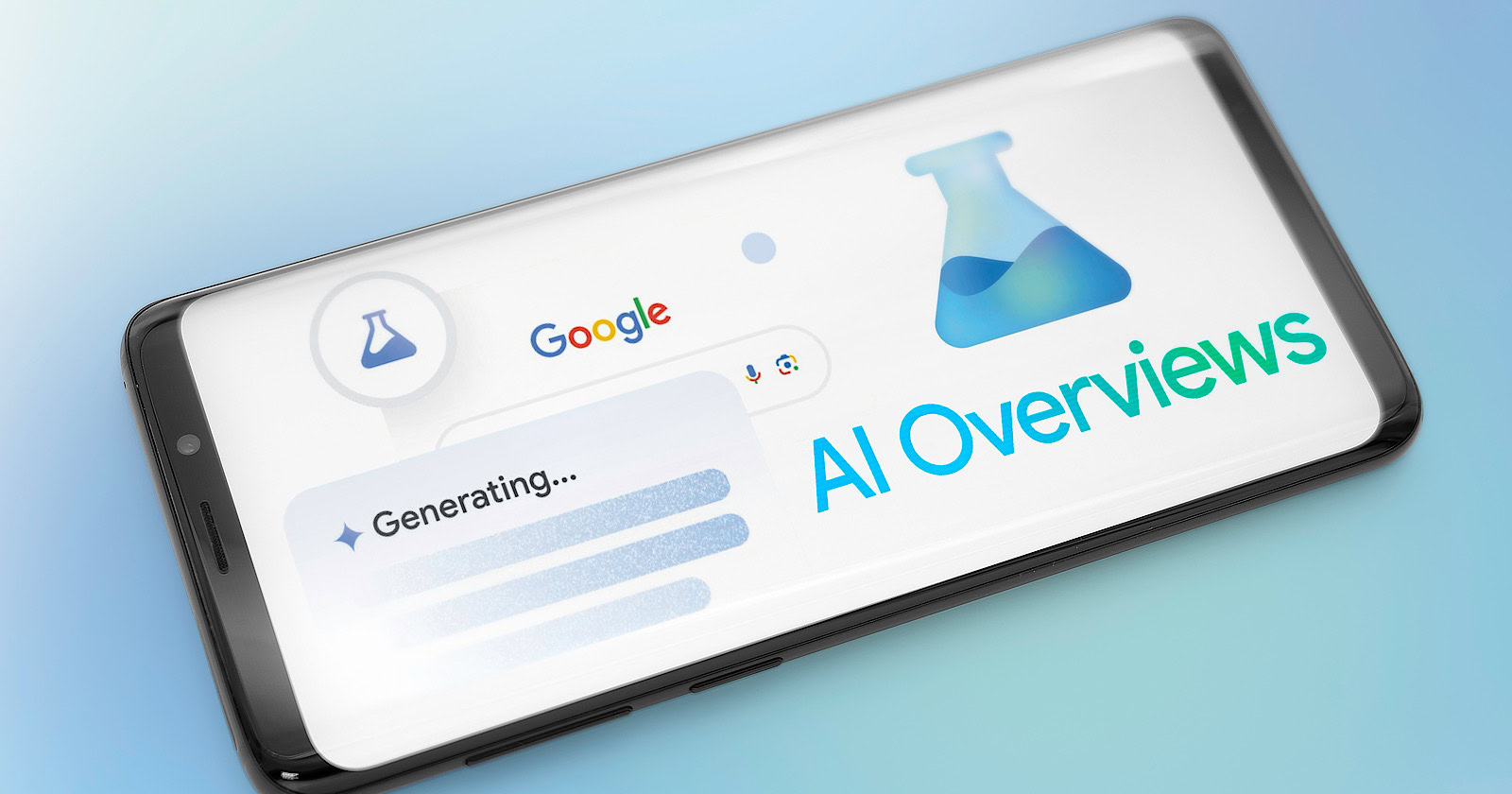
An analysis of 25,000 ecommerce queries by Bartosz Góralewicz, founder of Onely, reveals the impact of Google’s AI overviews on search visibility for online retailers.
The study found that 16% of eCommerce queries now return an AI overview in search results, accounting for 13% of total search volume in this sector.
Notably, 80% of the sources listed in these AI overviews do not rank organically for the original query.
“Ranking #1-3 gives you only an 8% chance of being a source in AI overviews,” Góralewicz stated.
🗞️ Google AI overviews vs. eCommerce 🗞️
We just finished analyzing 25k eCommerce queries.
TL;DR
– 16% of queries return AI-overview (previously SGE)
– 13% of search volume from search goes through AI overviews
– 80% of sources don’t rank organically for the query (!)
— Bartosz Góralewicz (@bart_goralewicz) May 22, 2024
Shift Toward “Accelerated” Product Experiences
International SEO consultant Aleyda Solis analyzed the disconnect between traditional organic ranking and inclusion in AI overviews.
According to Solis, for product-related queries, Google is prioritizing an “accelerated” approach over summarizing currently ranking pages.
She commented Góralewicz’ findings, stating:
“… rather than providing high level summaries of what’s already ranked organically below, what Google does with e-commerce is “accelerate” the experience by already showcasing what the user would get next.”
Solis explains that for queries where Google previously ranked category pages, reviews, and buying guides, it’s now bypassing this level of results with AI overviews.
This: “80% of AI overview sources don’t rank organically for the query” from 25K e-commerce queries that @bart_goralewicz analyzed.
This is what I’ve seen happening too because most of the AI overviews for product related queries are “accelerators”: rather than providing high… https://t.co/UFT2wTG2ht pic.twitter.com/i5neMpALl6
— Aleyda Solis 🕊️ (@aleyda) May 22, 2024
Assessing AI Overview Traffic Impact
To help retailers evaluate their exposure, Solis has shared a spreadsheet that analyzes the potential traffic impact of AI overviews.
I’ve updated my Google AI Overviews (AIO) Traffic Risk Impact Assessment Sheet to make it easier to:
1. Assess the before/after AIO CTR/traffic gap
2. The type of results/pages featured in AIO
3. Prioritize content optimization actions accordinglyCheck it out 👀👇… pic.twitter.com/JFejUcaIni
— Aleyda Solis 🕊️ (@aleyda) May 26, 2024
As Góralewicz notes, this could be an initial rollout, speculating that “Google will expand AI overviews for high-cost queries when enabling ads” based on data showing they are currently excluded for high cost-per-click keywords.
An in-depth report across ecommerce and publishing is expected soon from Góralewicz and Onely, with additional insights into this search trend.
Why SEJ Cares
AI overviews represent a shift in how search visibility is achieved for ecommerce websites.
With most overviews currently pulling product data from non-ranking sources, the traditional connection between organic rankings and search traffic is being disrupted.
Retailers may need to adapt their SEO strategies for this new search environment.
How This Can Benefit You
While unsettling for established brands, AI overviews create new opportunities for retailers to gain visibility without competing for the most commercially valuable keywords.
Ecommerce sites can potentially circumvent traditional ranking barriers by optimizing product data and detail pages for Google’s “accelerated” product displays.
The detailed assessment framework provided by Solis enables merchants to audit their exposure and prioritize optimization needs accordingly.
FAQ
What are the key findings from the analysis of AI overviews & ecommerce queries?
Góralewicz’s analysis of 25,000 ecommerce queries found:
- 16% of ecommerce queries now return an AI overview in the search results.
- 80% of the sources listed in these AI overviews do not rank organically for the original query.
- Ranking positions #1-3 only provides an 8% chance of being a source in AI overviews.
These insights reveal significant shifts in how ecommerce sites need to approach search visibility.
Why are AI overviews pulling product data from non-ranking sources, and what does this mean for retailers?
Google’s AI overviews prioritize “accelerated” experiences over summarizing currently ranked pages for product-related queries.
This shift focuses on showcasing directly what users seek instead of traditional organic results.
For retailers, this means:
- A need to optimize product pages beyond traditional SEO practices, catering to the data requirements of AI overviews.
- Opportunities to gain visibility without necessarily holding top organic rankings.
- Potential to bypass traditional ranking barriers by focusing on enhanced product data integration.
Retailers must adapt quickly to remain competitive in this evolving search environment.
What practical steps can retailers take to evaluate and improve their search visibility in light of AI overview disruptions?
Retailers can take several practical steps to evaluate and improve their search visibility:
- Utilize the spreadsheet provided by Aleyda Solis to assess the potential traffic impact of AI overviews.
- Optimize product and detail pages to align with the data and presentation style preferred by AI overviews.
- Continuously monitor changes and updates to AI overviews, adapting strategies based on new data and trends.
These steps can help retailers navigate the impact of AI overviews and maintain or improve their search visibility.
Featured Image: Marco Lazzarini/Shutterstock
SEO
Google’s AI Overviews Go Viral, Draw Mainstream Media Scrutiny
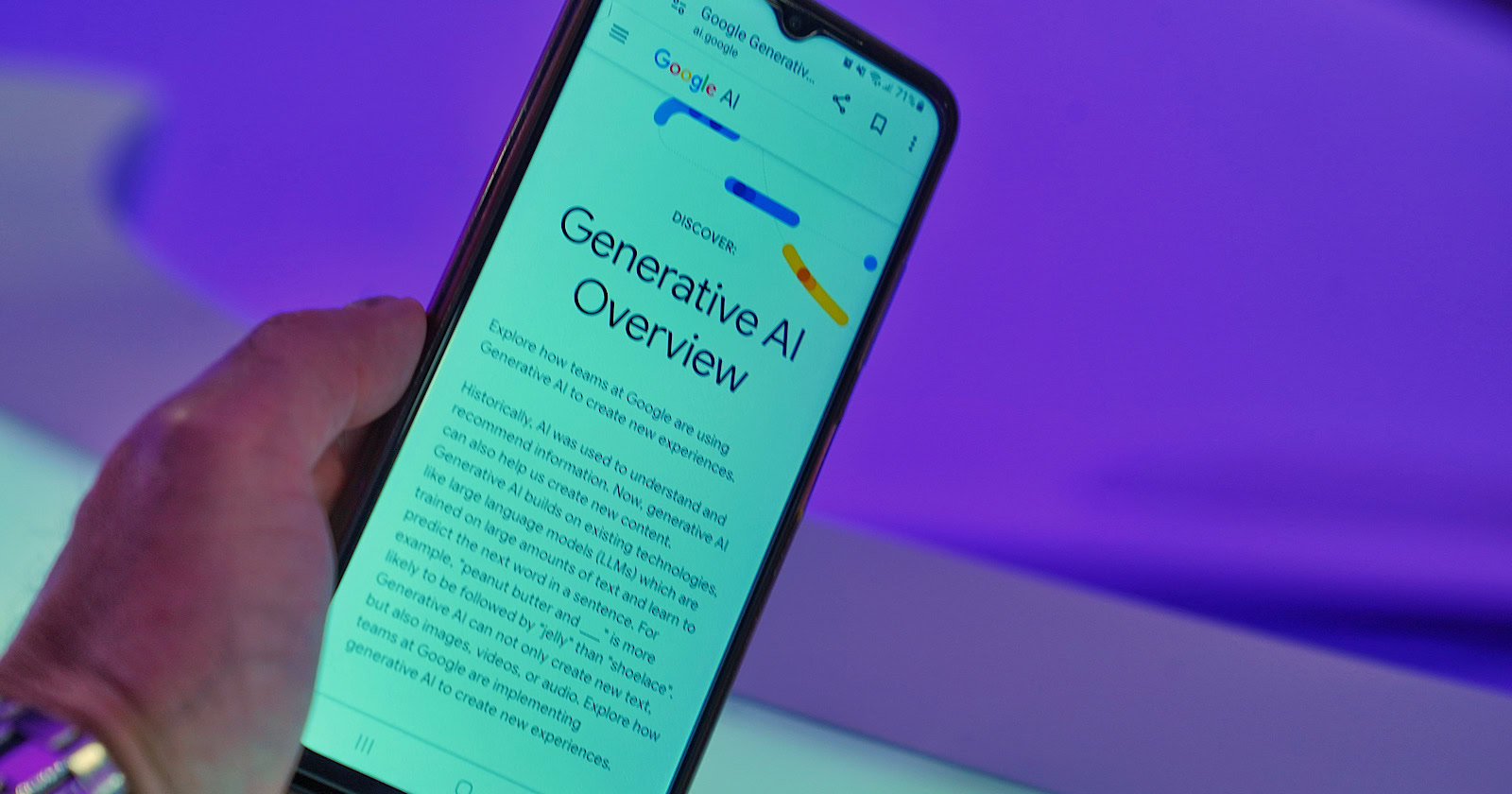
Google’s rollout of AI-generated overviews in US search results is taking a disastrous turn, with mainstream media outlets like The New York Times, BBC, and CNBC reporting on numerous inaccuracies and bizarre responses.
On social media, users are sharing endless examples of the feature’s nonsensical and sometimes dangerous output.
From recommending non-toxic glue on pizza to suggesting that eating rocks provides nutritional benefits, the blunders would be amusing if they weren’t so alarming.
Replicated….
But I appreciate that the glue suggested is “non-toxic”!
Look, this isn’t about “gotchas”, this is about pointing out clearly foreseeable harms. Before–eg–a child dies from this mess.
This isn’t about Google, it’s about the foreseeable effect of AI on society. https://t.co/kG0xP2if7L pic.twitter.com/MIPjF8hg0i— MMitchell (@mmitchell_ai) May 23, 2024
I couldn’t believe it before I tried it. Google needs to fix this asap.. pic.twitter.com/r3FyOfxiTK
— Kris Kashtanova (@icreatelife) May 23, 2024
Mainstream Media Coverage
As reported by The New York Times, Google’s AI overviews struggle with basic facts, claiming that Barack Obama was the first Muslim president of the United States and stating that Andrew Jackson graduated from college in 2005.
These errors undermine trust in Google’s search engine, which more than two billion people rely on for authoritative information worldwide.
Manual Removal & System Refinements
As reported by The Verge, Google is now scrambling to remove the bizarre AI-generated responses and improve its systems manually.
A Google spokesperson confirmed that the company is taking “swift action” to remove problematic responses and using the examples to refine its AI overview feature.
Google’s Rush To AI Integration
The flawed rollout of AI overviews isn’t an isolated incident for Google.
As CNBC notes in its report, Google made several missteps in a rush to integrate AI into its products.
In February, Google was forced to pause its Gemini chatbot after it generated inaccurate images of historical figures and refused to depict white people in most instances.
Before that, the company’s Bard chatbot faced ridicule for sharing incorrect information about outer space, leading to a $100 billion drop in Google’s market value.
Despite these setbacks, industry experts cited by The New York Times suggest that Google has little choice but to continue advancing AI integration to remain competitive.
However, the challenges of taming large language models, which ingest false information and satirical posts, are now more apparent.
The Debate Over AI In Search
The controversy surrounding AI overviews adds fuel to the debate over the risks and limitations of AI.
While the technology holds potential, these missteps remind everyone that more testing is needed before unleashing it on the public.
The BBC notes that Google’s rivals face similar backlash over their attempts to cram more AI tools into their consumer-facing products.
The UK’s data watchdog is investigating Microsoft after it announced a feature that would take continuous screenshots of users’ online activity.
At the same time, actress Scarlett Johansson criticized OpenAI for using a voice likened to her own without permission.
What This Means For Websites & SEO Professionals
Mainstream media coverage of Google’s erroneous AI overviews brings the issue of declining search quality to public attention.
As the company works to address inaccuracies, the incident serves as a cautionary tale for the entire industry.
Important takeaway: Prioritize responsible use of AI technology to ensure the benefits outweigh its risks.
SEO
New Google Search Ads Resemble AI Assistant App

A keynote at Google’s Marketing Live event showed a new AI-powered visual search results that feature advertisements that engage users within the context of an AI-Assisted search, blurring the line between AI-generated search results and advertisements.
Google Lens is a truly helpful app but it becomes unconventional where it blurs the line between an assistant helping users and being led to a shopping cart. This new way of engaging potential customers with AI is so far out there that the presenter doesn’t even call it advertising, he doesn’t even use the word.
Visual Search Traffic Opportunity?
Google’s Group Product Manager Sylvanus Bent, begins the presentation with an overview of the next version of Google Lens visual search that will be useful for surfacing information and for help finding where to buy them.
Sylvanus explained how it will be an opportunity for websites to receive traffic from this new way to search.
“…whether you’re snapping a photo with lens or circling to search something on your social feed, visual search unlocks new ways to explore whatever catches your eye, and we recently announced a newly redesigned results page for Visual search.
Soon, instead of just visual matches, you’ll see a wide range of results, from images to video, web links, and facts about the knowledge graph. It gets people the helpful information they need and creates new opportunities for sites to be discovered.”
It’s hard to say whether or not this will bring search traffic to websites and what the quality of that traffic will be. Will they stick around to read an article? Will they engage with a product review?
Visual Search Results
Sylvanus shares a hypothetical example of someone at an airport baggage claim who falls in like with someone else’s bag. He explains that all the person needs to do is snap a photo of the luggage bag and Google Lens will take them directly to shopping options.
He explains:
“No words, no problem. Just open Lens, take a quick picture and immediately you’ll see options to purchase.
And for the first time, shopping ads will appear at the very top of the results on linked searches, where a business can offer what a consumer is looking for.
This will help them easily purchase something that catches their eye.”
These are image-heavy shopping ads at the top of the search results and as annoying as that may be it’s nowhere near the “next level” advertising that is coming to Google’s search ads where Google presents a paid promotion within the context of an AI Assistant.
Interactive Search Shopping
Sylvanus next describes an AI-powered form advertising that happens directly within search. But he doesn’t call it advertising. He doesn’t even use the word advertising. He suggests this new form of AI search experience is more than offer, saying that, “it’s an experience.”
He’s right to not use the word advertisement because what he describes goes far beyond advertising and blurs the boundaries between search and advertising within the context of AI-powered suggestions, paid suggestions.
Sylvanus explains how this new form of shopping experience works:
“And next, imagine a world where every search ad is more than an offer. It’s an experience. It’s a new way for you to engage more directly with your customers. And we’re exploring search ads with AI powered recommendations across different verticals. So I want to show you an example that’s going live soon and you’ll see even more when we get to shopping.”
He uses the example of someone who needs to store their furniture for a few months and who turns to Google to find short term storage. What he describes is a query for local short term storage that turns into a “dynamic ad experience” that leads the searcher into throwing packing supplies into their shopping cart.
He narrated how it works:
“You search for short term storage and you see an ad for extra space storage. Now you can click into a new dynamic ad experience.
You can select and upload photos of the different rooms in your house, showing how much furniture you have, and then extra space storage with help from Google, AI generates a description of all your belongings for you to verify. You get a recommendation for the right size and type of storage unit and even how much packing supplies you need to get the job done. Then you just go to the website to complete the transaction.
And this is taking the definition of a helpful ad to the next level. It does everything but physically pick up your stuff and move it, and that is cool.”
Step 1: Search For Short Term Storage

The above screenshot shows an advertisement that when clicked takes the user to what looks like an AI-assisted search but is really an interactive advertisement.
Step 2: Upload Photos For “AI Assistance”
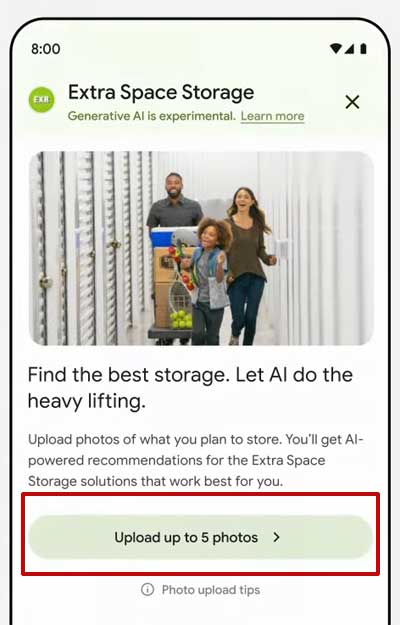
The above image is a screenshot of an advertisement that is presented in the context of AI-assisted search. Masking an advertisement within a different context is the same principal behind an advertorial where an advertisement is hidden in the form of an article. The phrases “Let AI do the heavy lifting” and “AI-powered recommendations” create the context of AI-search that masks the true context of an advertisement.
Step 3: Images Chosen For Uploading

The above screenshot shows how a user uploads an image to the AI-powered advertisement within the context of an AI-powered search app.
The Word “App” Masks That This Is An Ad

Above is a screenshot of how a user uploads a photo to the AI-powered interactive advertisement within the context of a visual search engine, using the word “app” to further the illusion that the user is interacting with an app and not an advertisement.
Upload Process Masks The Advertising Context
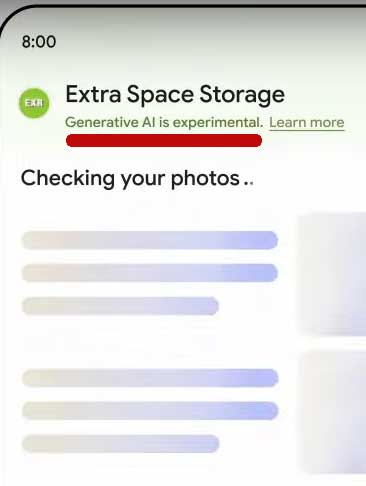
The phrase “Generative AI is experimental” contributes to the illusion that this is an AI-assisted search.
Step 4: Upload Confirmation

In step 4 the “app” advertisement is for confirming that the AI correctly identified the furniture that needs to be put into storage.
Step 5: AI “Recommendations”

The above screenshot shows “AI recommendations” that look like search results.
The Recommendations Are Ad Units
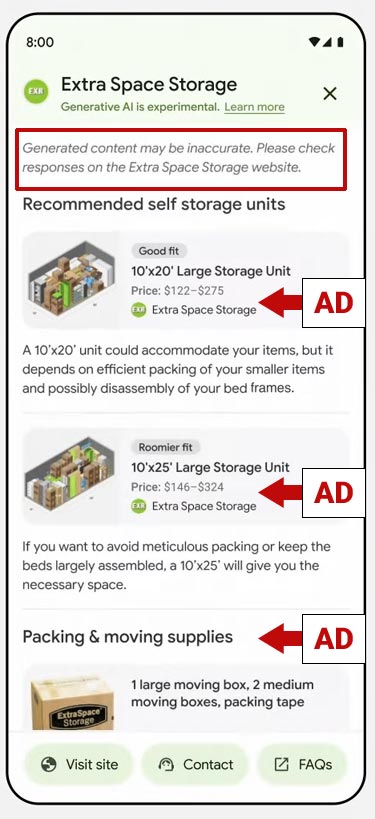
Those recommendations are actually ad units that when clicked takes the user to the “Extra Space Storage” shopping website.
Step 6: Searcher Visits Advertiser Website

Blurring The Boundaries
What the Google keynote speaker describes is the integration of paid product suggestions into an AI assisted search. This kind of advertising is so far out there that the Googler doesn’t even call it advertising and rightfully so because what this does is blur the line between AI assisted search and advertising. At what point does a helpful AI search become just a platform for using AI to offer paid suggestions?
Watch The Keynote At The 32 Minute Mark
Featured Image by Shutterstock/Ljupco Smokovski
-
SEARCHENGINES7 days ago
Daily Search Forum Recap: May 21, 2024
-

 MARKETING4 days ago
MARKETING4 days agoXngage and HawkSearch join forces with a powerful connector
-
SEARCHENGINES6 days ago
Daily Search Forum Recap: May 22, 2024
-
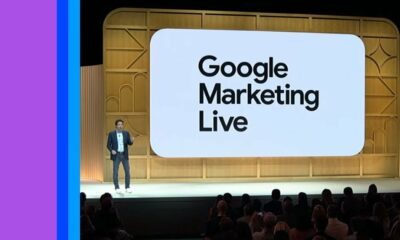
 PPC7 days ago
PPC7 days ago8 Fast Takeaways from Google Marketing Live 2024
-

 WORDPRESS4 days ago
WORDPRESS4 days ago11 Best WordPress Paywall Plugins (Free and Paid Options)
-

 PPC6 days ago
PPC6 days agoRunning Performance Max Against Brand is a Waste
-

 SEO6 days ago
SEO6 days agoOptimizing Interaction To Next Paint: A Step-By-Step Guide
-
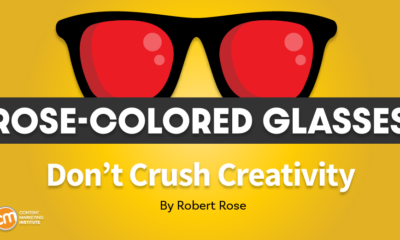
 MARKETING6 days ago
MARKETING6 days agoWhy Even Crushing Content Failures Aren’t Mistakes












